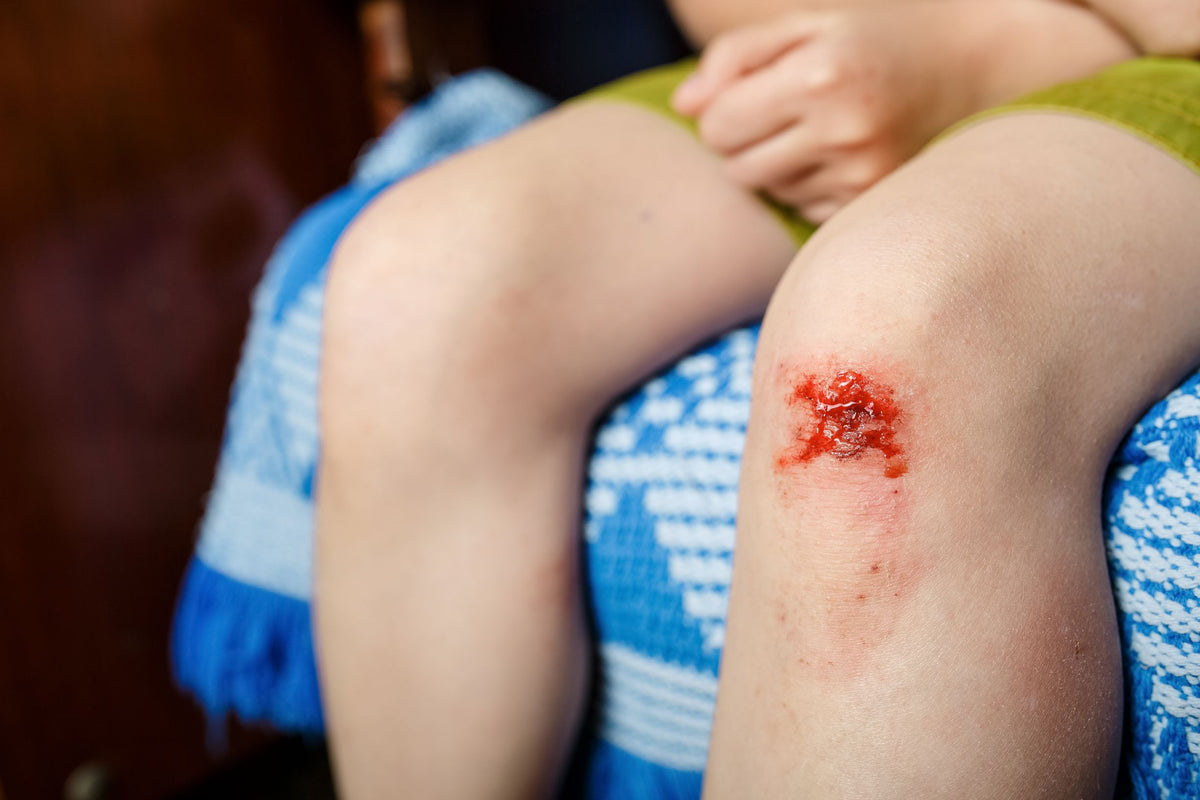06th June 2021
Granulating Wounds: 3 Ways To Optimize Healing
Dr. Devan Patel, PharmD
If you’ve suffered from a recent injury, waiting for your wound to completely heal may feel like forever. However, if you see a red/pink bumpy layer of tissue forming over your wound, that’s the sign of major wound healing progress. This is the presence of a granulating wound.
While wound recovery is a natural bodily response, there are active ways you can take part in optimizing the process. But before we get into that, it’s vital to understand what granulating wounds are and their importance.
What are Granulating Wounds?
Granulating wounds are wounds that have granulation tissue forming in the affected area. The formation of granulation tissue happens in the transition from the inflammatory phase (2nd phase) to the proliferative phase (3rd phase) of wound healing.
Granulation tissue has three important functions:
-
Protects the wound from further infections
-
Creates tissue that forms from the base of the wound to the top.
-
Initial tissue layer before scar tissue begins to form
How does Granulation Tissue Form?
Several cell mechanisms and cellular components allow the healthy formation of granulation tissue. Below are the important cells and structures that are present in granulating wounds that help restore the skin.
-
Immune Cells: These cells help fight off infection to prevent invading pathogens and bacteria in the wounded area.
-
Fibroblasts: This cell forms a granulation tissue extracellular matrix. This matrix contains collagen which aids in the formation of new skin tissue and blood vessels. It also turns into myofibroblasts which help add rigidity to the granulation tissue.
-
Endothelial cells: These cells transform into skin tissue and are necessary for the formation of blood vessels. The creation of the blood vessels induces blood flow to the granulation tissue (ie. wounded area) allowing for adequate oxygen supply.
Granulating wounds also minimizes the symptoms experienced during the inflammatory phase. As such, you should no longer feel pain or heat once the process has shifted to the formation of granulation tissue.
Optimize Healing: How To Take Care of Granulation Tissue
The presence of granulation tissue is a critical time in the wound healing process. While it’s a sign that you’re on your way to the final stages of recovery, there are many precautions to take during this time. Here are some precautionary measures to take, ensuring quick and sufficient formation and maintenance of granulation tissue.
1. Protect the Wound
While this new layer of tissue is forming, it’s not the final stage. Additionally, many essential cellular mechanisms are occurring during the formation of granulation tissue. That’s why you still need to protect the wounded area.
You should cover the wound with collagen dressing to limit infections and provide a warm environment for quicker healing. Additionally, make sure to avoid direct sunlight on the wound as well.
2. Be Aware of Irregular Tissue Formation
Granulating wounds take different shapes and forms. There are two types of granulation tissue that slow down wound recovery and ones that you should be cautious of: hypotrophic and hypertrophic.
Hypertrophic: This is when there is an overproduction of granulation tissue. Hypertrophic granulation tissue prevents skin cells from forming in the center of the wounded area. Often, this is caused by an infection.
Hypotrophic: Granulation tissue should appear red and bumpy. However, if it appears smooth and pale pink, this is an indication of hypotrophic granulation tissue. This indicates that tissue growth has stunted. You may want to check for signs of possible infection or damage to the wound.
3. Take the Right Supplements
Each cellular stage involved in granulating wounds involves specific vitamins and minerals. You can read all about the various vitamins that aid in wound healing and the role they play in wound recovery. But as a quick overview, here are the few vitamins you should be consuming to optimize wound recovery, specifically to form healthy granulation tissue.*
Vitamin C: Collagen is needed for granulating wounds to form new tissue. Vitamin C helps with the secretion and the creation of collagen during this stage.
Vitamin A: This vitamin helps with the formation of blood vessels in the granulation tissue. It allows the tissue to begin receiving blood flow.
L-Glutamine: Granulating wounds require an adequate number of skin cells to form. This vitamin aids in the process by prompting cells to split which increases the number of skin cells available.
WoundVite is the perfect supplement that carries these vitamins and other minerals to speed up wound recovery.* Years of research and studies have been performed to prove the efficiency of these vitamins and how beneficial they are with wound healing.* While this supplement was manufactured in the USA and perfectly safe to consume, talking to your doctor beforehand is always recommended.*
The sight of granulation tissue is a positive direction in your recovery. However, with the proper precautions and consumption of vitamin-rich supplements, you can expect a full wound recovery in no time.*
* These statements have not been evaluated by the Food and Drug Administration. These products are not intended to diagnose, treat, cure or prevent any disease.


